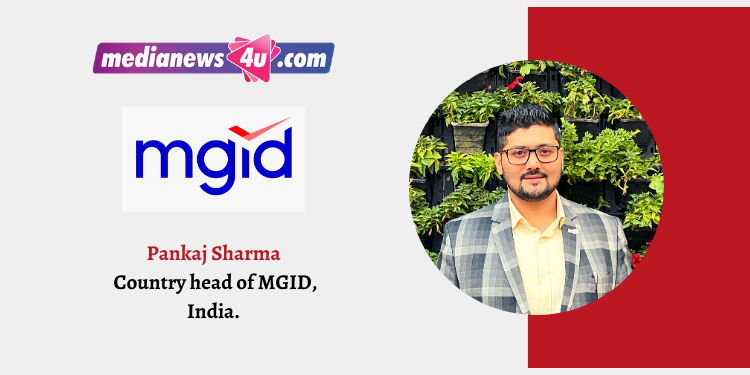Based in the US, and with offices in Europe and APAC, including India, MGID is a global pioneer in native advertising that aims to “help publishers grow and monetize their audiences and drive performance as well as awareness for advertisers” via one integrated platform.
Pankaj Sharma, Country head of MGID India, speaks on India operations, the company’s vision and mission and brand communication in the new normal.
2008 to now the journey of MGID, the company’s vision and mission?
MGID was founded in 2008 in New York. Today we operate out of 11 global offices with a total staff of700+. Our operations are now spread to more than 200 countries and territories where we support our clients in 70+ languages.
MGID was the first platform to introduce content discovery through a native widget. At that time, it was a novel concept, but it caught on very fast. The technology we offered was a unique opportunity for publishers to control the flow of users on their websites as well as grow their audience.
Today, as we speak, MGID is delivering content recommendations to more than 850 million readers in a month with the count of such recommendations crossing 185 bn monthly. These are staggering numbers but they also show that MGID is playing a keen role in making content discoverable across platforms and it is our mission to empower advertisers as well as publishers with technology, yielding outstanding advertising experiences, for both product and consumer.
Our vision today is to nurture a new stage of digital media, enabling consumers to engage with content and sponsored advertisements in an equally positive way. We are dedicated to delivering positive user experiences from consuming ads to consuming editorial content on a website.
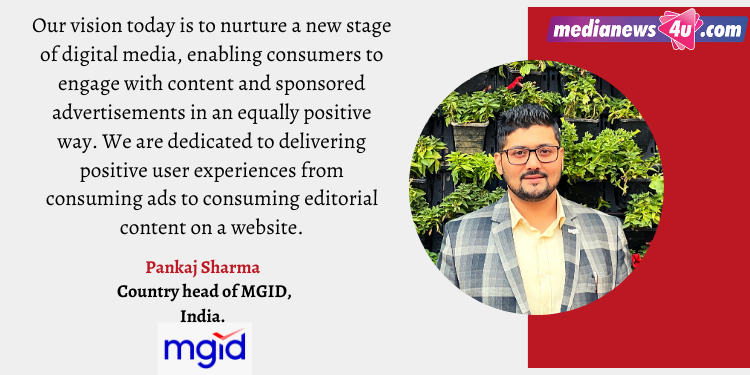
MGID talks about personalizing the brand message for their target audience, can you elaborate on this?
Let me answer that question with an example. A brand that is launching a new line of yoga gear would want to reach out to people who are interested in yoga and practice it regularly. One of the best ways to do so, in the digital space, would be to run their advertisements on websites or pages that cater to content on this topic, because they know the audience reading this content is their target market. Alternatively, brands can choose the audience to target based on their behavior online like the websites visited, the content viewed, purchases made, etc.
MGID offers two main types of ad targeting for brands – contextual and audience-based targeting. Both come under the purview of personalised advertising. The former relies on matching ads with the page content, while with the latter, ads are displayed to particular users based on their online behaviour and/or socio-demographic data.
Through personalised advertising we ensure that brands can deliver their messages to the relevant set of audience. MGID employs AI-based algorithms for that.
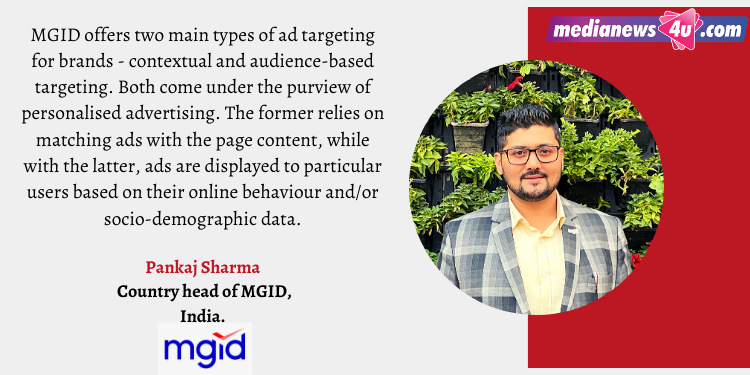
What is native advertising?
There are too many definitions of native advertising, but I feel it means being relevant for the user who is reading it.
Native ads match the content and design of the web page where they are hosted. By delivering the content most suitable to the user’s interest, native ads help avoid banner blindness and ad fatigue.
It is pull-based advertising; the user will only engage with the content if is relevant and engaging enough. When compared to other formats like display advertising, native is more subtle and syncs well with the overall content of the website. It suggests a more subtle and indirect selling approach, rather than standing out as hard-sell advertising.
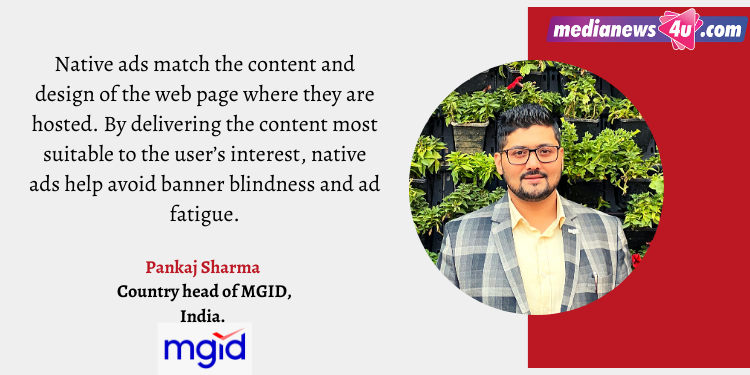
How different is brand messaging globally as compared to a brand message in India?
One of the key things to remember when working on brand messaging is that it should resonate not just with the audience but also their language and their culture. Only then will they find it relevant and relatable. While globally you might have one set of communication that can be implemented across several countries, in India you have to recognise the different cultures and languages and probably come up with a plan that includes several vernacular languages with slight twists and modifications in the messaging to suit each one.
Although this presents a challenge, at the end of the day it ensures that no faction of your target market interprets the brand’s messaging incorrectly. This increases the effectiveness and efficiency of your advertising.
So, compared to brand messaging globally I would say brand message in India takes a bit more work, but it is definitely worth it.
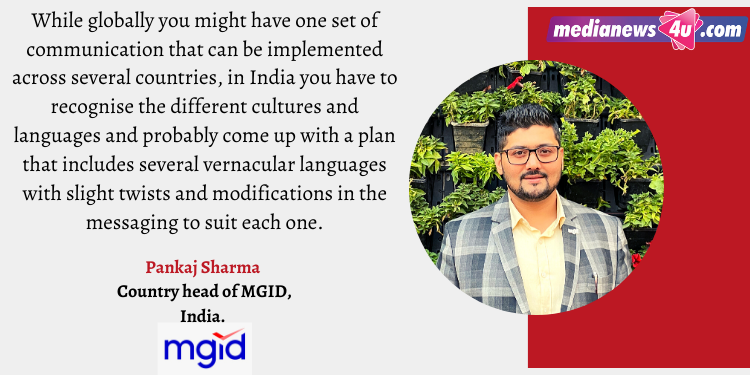
Do you think the COVID-19 pandemic has made brands in India rethink their strategies to reach out to their audience? How have brands and the audience alike responded to the ‘new normal’?
The entire advertising industry came to a standstill during the lockdown and initially brands were also a bit hesitant to communicate with the audiences as sentiments were very low.
Over this period the consumers too have become more focused on the essential products than the non-essentials. Brands have adapted and changed their messaging accordingly by focusing more on value, deep understanding of consumer emotions and relationships.
Globally, brand communication is largely focusing on the safety and security aspects of their products. In India, brands have shown agility and have quickly tweaked their narrative to communicate what is the need of the hour. Most of the communication is around how to stay safe, spread awareness, bring positive messaging and help to cope up with the difficult times.
We will soon witness some creative formats like never before and the only thing that will matter is how brands stick to their values and live up to their core purpose. Brands will have an opportunity to come alive and gain consumer loyalty like never before.
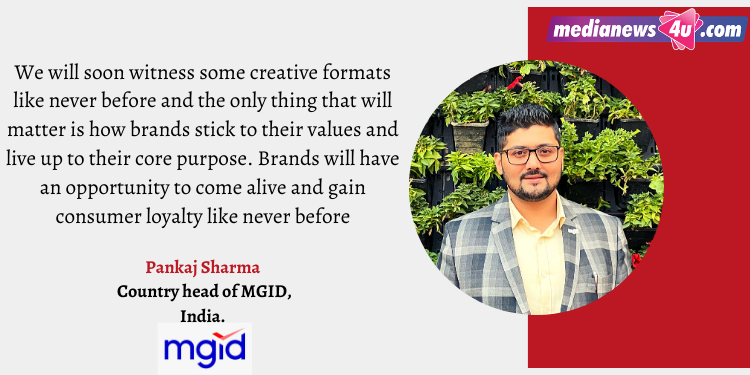
In light of the pandemic, a shift has been seen from traditional media to digital media, which has made brands re-think the advertising tools they have employing? At MGID how have you responded to this shift and what methodologies are you employing to help brands stay relevant?
MGID helps brands to customise their communication by creating content to meet their desired goals. We help brands to create pre-landers and interactive content to engage audiences, thus helps in driving better ROI.
We use Ad Verification tools like ‘Anura’ and ‘Ad-choices’ to detect Ad Frauds, Malware and Human Fraud. MGID Inventory is certified with Anura and Ad-choices. Also, we use Geo Edge, which help us in protecting the user experience against malicious and inappropriate ads. These tools help us in providing a safe platform for Advertising and Partnered Publishers.
MGID Patent Data Technology helps to learns a lot about our users and how they react to the communications. We have set up local moderation and editorial teams in India to help our clients to create content that converts.
MGID also makes use of a native advertising approach that serves both branding and performance-oriented objectives. At MGID we call this approach BrandFormance. It often happens that brand managers only focus on one metric, either branding or performance, and in doing so they are not able to get optimal return on their investment. The Brandformance approach offers more brand-conscious use of performance marketing channels and tools and we have seen it deliver excellent results over several successful campaigns.
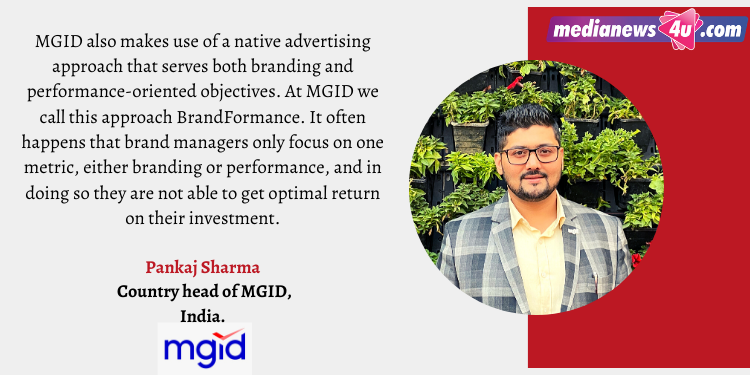
Having accomplished so much and come such a long way in a little over a decade, what is the next milestone for MGID and the way forward?
At MGID we are always on the lookout for the ‘next big innovation’. This can be in the technology we use or the strategy we employ for our business. At present we are working towards more of a local strategy which will help us create in-roads with new markets worldwide.
India, of course, is very crucial for us as it is amongst the top markets in terms of page views and clicks globally and to that end, we have started acquiring new publishers. Recently, we signed a global partnership with Microsoft, Opera Ads along with some regional tie-ups with publishers like Sakaal Media Group, Saamana, and Prabhat Khabar amidst the lockdown.
In the coming years, our end goal will remain to become the preferred partner in native advertising for brands, especially in new markets. To be able to accomplish that we will need a strong and solid foundation, which is what we are building right now.


